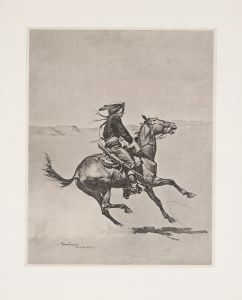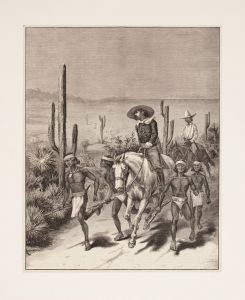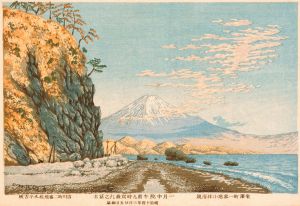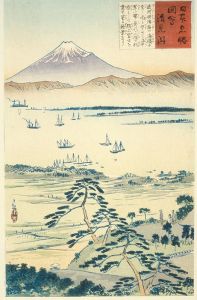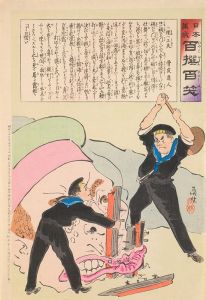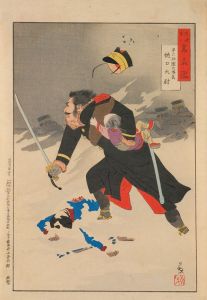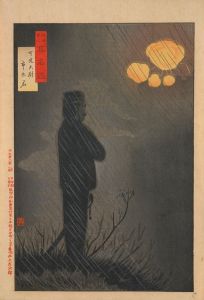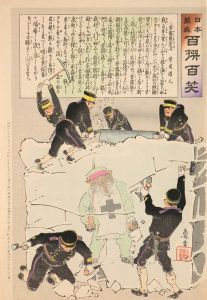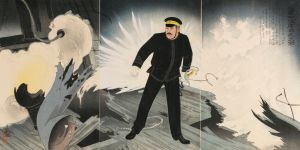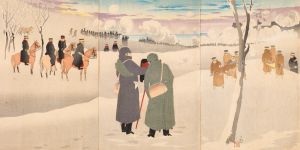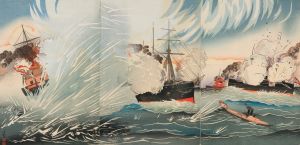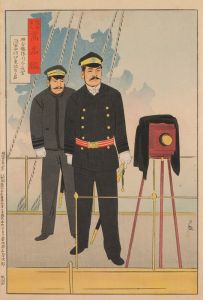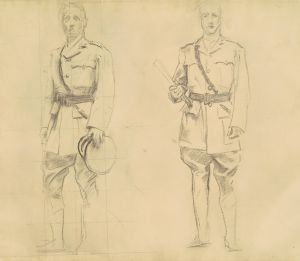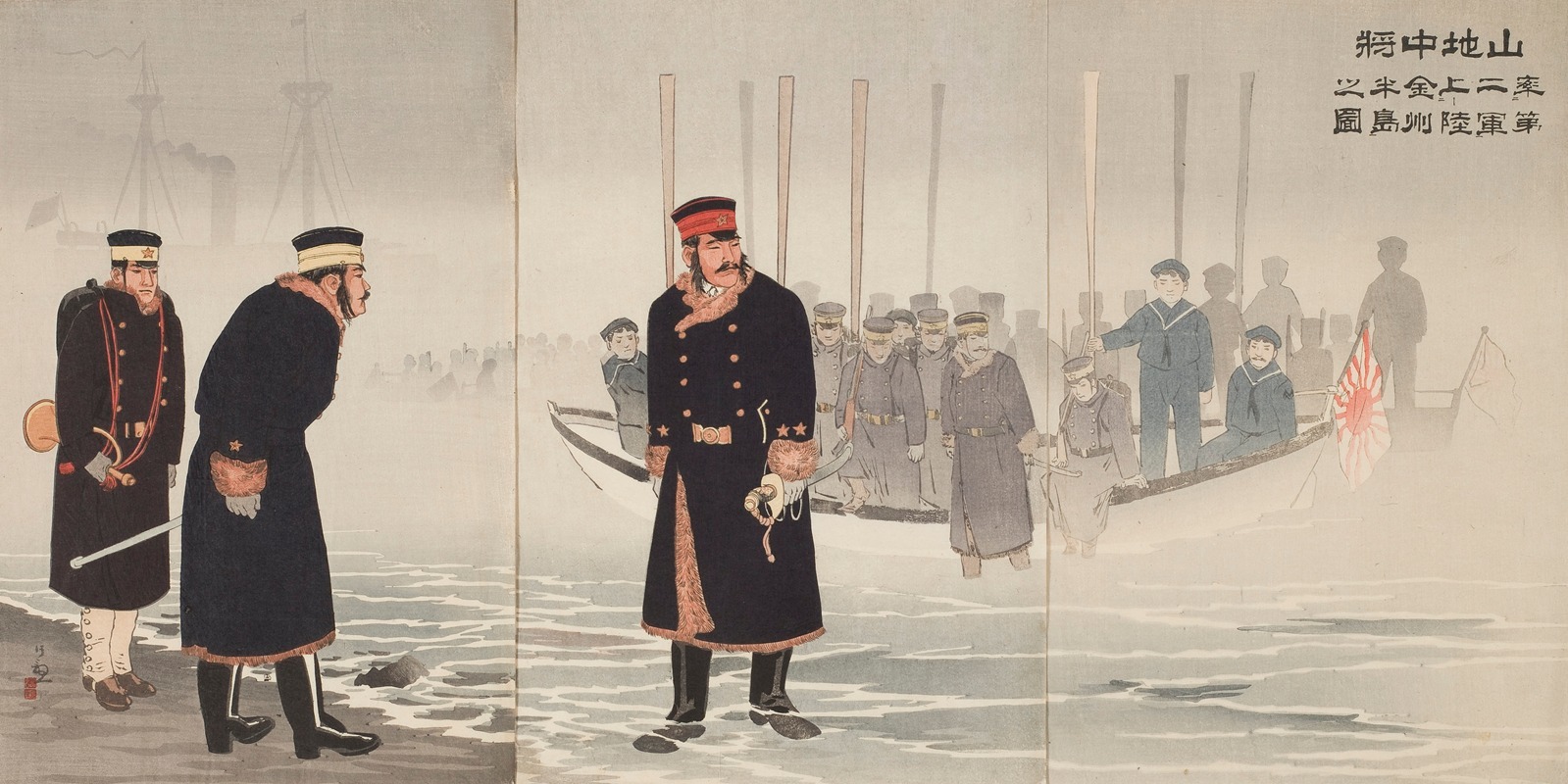
Lieutenant-General Yamaji; Leading the Japanese Second Army during Its Landing on the Jinzhou Peninsula
A hand-painted replica of Kobayashi Kiyochika’s masterpiece Lieutenant-General Yamaji; Leading the Japanese Second Army during Its Landing on the Jinzhou Peninsula, meticulously crafted by professional artists to capture the true essence of the original. Each piece is created with museum-quality canvas and rare mineral pigments, carefully painted by experienced artists with delicate brushstrokes and rich, layered colors to perfectly recreate the texture of the original artwork. Unlike machine-printed reproductions, this hand-painted version brings the painting to life, infused with the artist’s emotions and skill in every stroke. Whether for personal collection or home decoration, it instantly elevates the artistic atmosphere of any space.
Lieutenant-General Yamaji; Leading the Japanese Second Army during Its Landing on the Jinzhou Peninsula is a woodblock print created by the Japanese artist Kobayashi Kiyochika. This artwork is part of a series of prints that Kiyochika produced during the First Sino-Japanese War (1894–1895), a conflict between the Qing Dynasty of China and the Empire of Japan over influence in Korea. The print depicts Lieutenant-General Yamaji Motoharu, a prominent military leader in the Imperial Japanese Army, commanding the Japanese Second Army during its landing operation on the Jinzhou Peninsula, located in present-day Liaoning Province, China.
Kobayashi Kiyochika (1847–1915) was a renowned ukiyo-e artist known for his innovative approach to traditional woodblock printing. His works often combined Western-style techniques, such as perspective and shading, with traditional Japanese aesthetics. During the First Sino-Japanese War, Kiyochika created a series of prints that documented key events and celebrated Japanese military victories. These prints were widely distributed and served as a form of wartime propaganda, aimed at bolstering national pride and support for the war effort.
The Jinzhou Peninsula, also known as the Liaodong Peninsula, was a strategically significant location during the war. The Japanese Second Army, under the command of General Ōyama Iwao, conducted operations in the region to secure control over key territories. Lieutenant-General Yamaji Motoharu played a crucial role in leading his troops during these campaigns. The landing depicted in the print likely refers to one of the military maneuvers carried out by the Japanese forces as they advanced through the peninsula.
Kiyochika's print captures the dramatic moment of leadership and action, with Lieutenant-General Yamaji prominently positioned to convey his authority and determination. The composition emphasizes the disciplined organization of the Japanese troops and their readiness for battle. The use of bold colors and dynamic lines reflects the artist's skill in creating visually striking and emotionally impactful imagery.
This artwork is an example of how art was used to document and interpret historical events, as well as to influence public perception. While it provides insight into the Japanese perspective on the war, it is important to approach such works with an understanding of their propagandistic intent and the broader historical context of the conflict.





